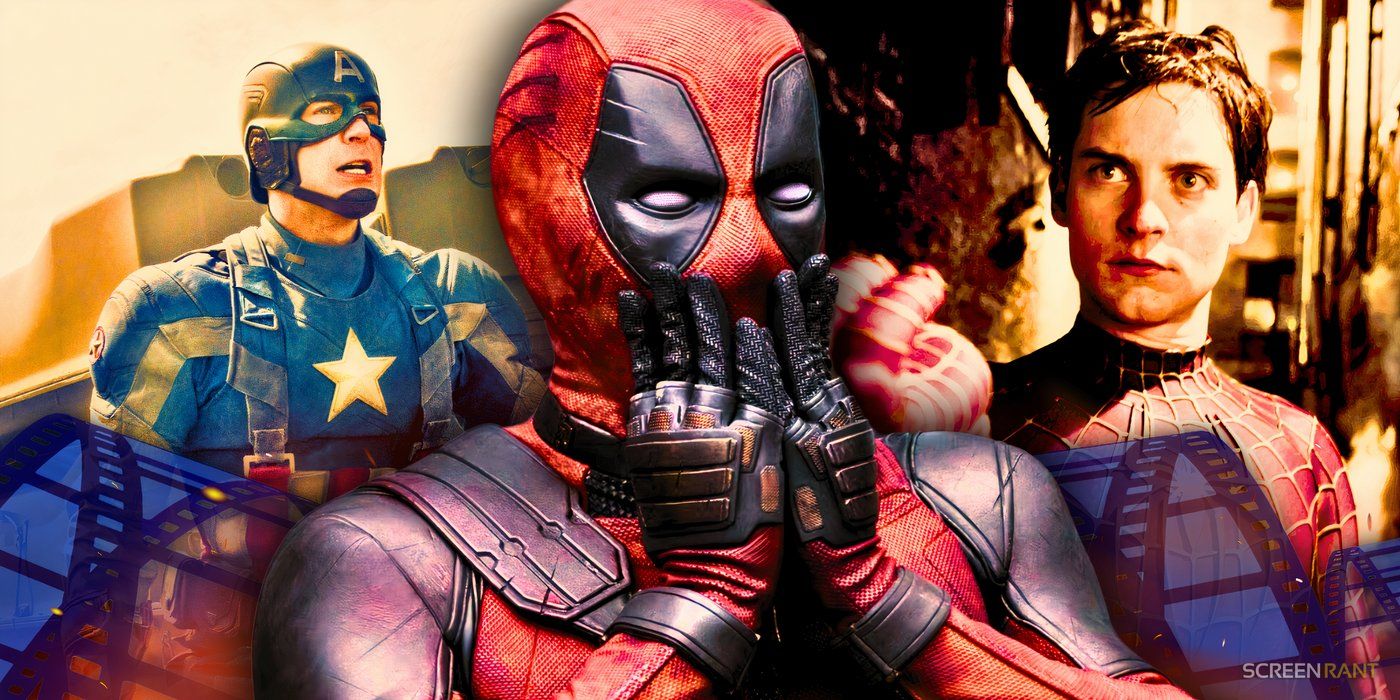
Warning: Spoilers for Captain America #15!Wonder I just broke the fourth wall in the funniest way I've ever seen, and I can't help but think it's a criticism DC Comics. Considering DC's exhausting history of multiversal collisions and constant crises, it was only a matter of time before Marvel started mocking its biggest competitor. The way Marvel does this, however, is so similar to Deadpool that it engages the reader.
Captain America is having a wild new adventure in Captain America #15 by J. Michael Straczynski, Jesús Saiz, Matt Hollingsworth and Joe Caramagna. Together with Spider-Man and Thor, they retreat to the safe haven of Broxton, Oklahoma. However, when trying to resolve certain faults that do not match the timing, Spider-Man and Captain America risk a new Multiverse theory that embarrasses DC.
According to Spider, the multiverse cannot exist, and that is a fundamentally radical concept for comics, Captain America and Spider-Man need to break the fourth wall to communicate to the reader how wild this idea is.
Marvel may be scoffing, but the DC Comics multiverse has been around since the sixties
The Flash #123 Cover by Carmine Infantino
The multiverse is a classic science fiction concept which has been perfected by superhero comic books. DC first experimented with the conflicting multiverse in the 1961 story "The Flash of Two Worlds" by The Flash #123 by Gardner Fox and Carmine Infantino. Marvel followed suit just a year later in Strange Tales #103 by Stan Lee and Larry Lieber, where the Human Torch accidentally crossed into a parallel reality and introduced the multiverse. Around the same time, both DC and Marvel were playing with worlds other than these.
For the most up-to-date status of the DC multiverse, check out 2024 DC everything special #1 by Joshua Williamson, Scott Snyder, Daniel Sampere, Wes Craig, Dan Mora and more, available now from DC Comics.
Over the years, this multiversal idea has gotten even bigger, with DC creating a supersaturated landscape of universes and Marvel filling out its Ultimate Universe in the 2000s. Sometimes, even, the two publishers would engage in major crossovers, where characters like Superman and Spider-Man could team up or Batman and the Hulk could fight. Nowadays, however, I just think It's all very complicated to followespecially when it comes to the DC multiverse.
DC Comics has long-standing problems with its multiverse
The Absolute Universe finally solves its oversaturation problem
It's no secret that DC has a mess of alternate realities. Since then Crisis on Infinite Earths by Marv Wolfman and George Pérez, DC has had a lot of fun rejecting, returning, and rejecting again alternate versions of beloved characters, charting wildly different landscapes. But for me, the crises come one after another and it feels like I'm drowning in them. Every few years, the universe resets and all my beloved characters change. Nothing is constant in DC, not even the multiverse, that dies and is reborn whenever the years change.
DC is giving fans like me the chance to see a different version of a hero running through the classic continuity.
Recently, however, in an effort to fix this, the DC Multiverse disappeared. Instead of, the publisher will focus on its Absolute Universewhich is not unlike Marvel's Ultimate Universe. Moving away from the constant changes to the original characters, DC is giving fans like me the chance to see a different version of a hero running alongside classic continuity. This new status quo means that, hopefully, there will be fewer continuity changes in the near future – so I can catch my breath.
Marvel Comics has a much more digestible multiverse than DC's
Secret Wars cover by Mike McKone and Rachelle Rosenberg
Across the street, Marvel presents a different version of the multiverse idea. Not only did this change the game in the 2000s with the Ultimate universe, which allowed Marvel to cater to a new population of readers like me, also changed the game with his And if series. Instead of outlining an entire multiverse, Marvel was able to detail moments in its history where things could have been different and allowed fans like me to glimpse this otherworldly setting. So, Marvel returns to its regular schedule, with no character resets and no timeline changes.
It's such a fun concept to me that after years of multiverse comics (and years of being a fan reading about the multiverse), can be unmasked in just a few panels of Spider-Man. The science here is absolutely theoretical, just like everything about the multiverse, and yet it makes perfect sense to me. I also love that it's none other than the scientific Spider-Man who comes to this conclusion, but even Captain America knows it's a heavy-handed conclusion, leading them both to break the fourth wall in a move Deadpool would love.
Captain America and Spider-Man officially unmask the multiverse
And imitate Deadpool in the process
It's truly one of the funniest comedic moments I've ever seen, precisely because I didn't expect it. From Deadpool, I can expect some accidental multiversal shenanigans, but I've never seen Captain America and Spider-Man so perplexed that they turn to me, the reader, for help. With a joke and a quick theoretical sketch, Wonder killed the idea of the multiverse and, in the process, dealt a good blow to its competitor, DC. And yet, perhaps in another universe, DC Comics He's the one who laughs last.
Captain America #15 is now available from Marvel Comics!



